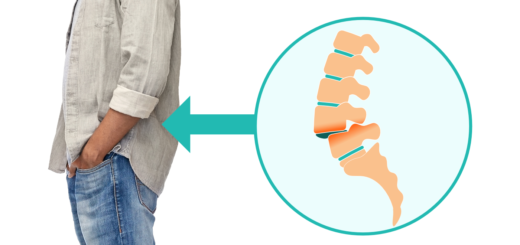Yoga for pelvic floor muscles: do you need to strengthen or release?
10My toddler has been going through a potty training process, which means learning to control his pelvic floor muscles. Not a fun experience, but I am sure he will get a hang of it eventually. Once we finish our toilet training in early childhood, we tend to forget about those muscles forever (men) or until childbirth (women). Then as the old age creeps up we might start experiencing problems with sexual function, leakage, organ prolapse – all unfortunate signs of weakened pelvic floor muscles. And yes, men can have those problems, too. How can we prevent that? By exercising our pelvic floor muscles. After all, they are MUSCLES, which means that they can get weak from underuse, they can get tight and they certainly benefit from regular exercising. But let’s start at the beginning.
What are those pelvic floor muscles?
If you look at a cross-section of a torso, you will see that it is divided into 2 levels, just like your house. The top level is a thoracic cavity and its floor is a diaphragm. The word diaphragm comes from two words dia – “across” and phragma – “a fence”. So basically it serves as a partition between two levels. The bottom level is your abdominopelvic cavity and its floor is formed by the pelvic floor muscles, sometimes called the pelvic diaphragm. Its main purpose is to support the structures that sit above it. Just like the furniture in your house sits on the floor, your internal organs sit on your pelvic floor.
What else do pelvic floor muscles do?
Pelvic floor has openings for the excretions to pass through (urine and feces). Pelvic floor muscles wrap pretty tightly around those openings, so that we have conscious control over the process of urination and elimination. Then there is an additional opening of the vagina in women leading up to the uterus; during pregnancy pelvic floor muscles provide support for the baby.
Pelvic floor muscles are important for sexual function in both men and women; in men they support erectile function and ejaculation, in women they contribute to sexual sensation and arousal.
Pelvic floor muscles work in harmony with your abdominal muscles and your back muscles to support the spine.
What can go wrong?
When you look at the pelvic floor muscles, they look kind of like a hammock. That hammock can have a healthy muscle tone and perform all the functions above properly, or it can loose its tone and become either too weak (“droopy hammock”) or too tight (“taut hammock”).
“Droopy hammock” means that the pelvic floor muscles have weakened. This can lead to
- Organ prolapse
- Urinary and bowel leakage
- Issues with sexual function and others
Why would the hammock become droopy? Here are some of the reasons:
Pregnanacy and childbirth - Obesity - Heavy lifting - High impact exercise - Chronic coughing - Nerve damage - Old age
There are many things we can do in a yoga practice to prevent and remedy the “droopy hammock”.
Yoga for pelvic floor muscles (“droopy hammock”)
- Contracting the pelvic floor muscles and pulling them up, similarly to mula bandha. We have to remember that both contracting AND release are important, since we want to build the muscle tone without creating tension. It works best if you contract those muscles during exhalation, then maintain the contraction for few seconds as you hold the breath out and then gradually release the contraction as you inhale. This can be done in a seated position or in other poses and can become a theme for a practice. The trick is always not to overdo it.
- Another useful technique is called krama exhalation, which basically means “segmented exhalation”. You would begin your exhalation by contracting and lifting the pelvic floor muscles then pause your exhalation for couple of seconds maintaining the contraction, and then continue to exhale, progressively contracting your lower abdomen. After a brief pause you would release the contraction on the inhale.
- When it comes to asana, it is very useful to combine the movements that involve external rotation of the hips (which will make your pelvic floor muscles more taut) with contraction and lift of those muscles. In addition, you can use your arms to literally lift your butt off the ground to support this upward lifting motion.
 “Taut hammock” means that pelvic floor muscles are unable to relax, which can lead to pain, constipation, inflammation and other problems. This can be a result of:
“Taut hammock” means that pelvic floor muscles are unable to relax, which can lead to pain, constipation, inflammation and other problems. This can be a result of:
Trauma (physical or emotional) - Abdominal surgery (scar tissue) - Stress - Chronic muscle spasm - Myofascial adhesion - Aftermath of an infection
Yoga for pelvic floor muscles (“taut hammock”)
- Emphasis on the inhalation. It helps to envision the movement of the respiratory diaphragm on the inhalation (down) and imagine the pelvic floor muscles moving in the same direction. Hold the breath in for few seconds with that awareness and then slightly contract the pelvic floor muscles on the exhale. As always, to release the muscle tension, we need to combine gentle muscle contraction with gentle stretching.
- Focus on langhana practice (quieting the system). The pelvic organs are uniquely linked to the Autonomic nervous system including both SNS (“fight-or-flight”) and PNS (“rest-and-digest”) innervations. This means that the entire pelvic area can tighten in response to stress or any perceived threat. Using langhana techniques helps to activate the relaxation response.
- In terms of asana, it helps to include the movements that stretch the hip joints and facilitate “pelvic opening” (when one or both legs are abducted and externally rotated). However, it’s important to take a very gradual approach, especially if you suspect that there’s been some sort of trauma. It’s best to stay away from assisting those students in vulnerable positions and give them a chance to explore those on their own (when and if it is appropriate).
From the yogic perspective both the “droopy hammock” and the “taut hammock” are associated with imbalances in Apana vayu that resides in the pelvis and moves down and out. Apana vayu has two important qualities: elimination and retention. These two opposites need to balance each other; if the downward pull is too strong you end up with the “droopy hammock”, if the retaining quality is too strong, it may lead to the “taut hammock”. Keep in mind that none of this is literal; these are just the tendencies that we might observe and use to structure a yoga practice.
It can also be tempting to form assumptions about other aspects of your client’s life and psyche based on those observations. For example, if somebody has weak pelvic floor muscles you might assume that they have trouble containing things in general, have emotional “leakage”, problems with stability and security, etc, etc. This may or may not be true. We have to be really careful and not jump to conclusions. A better path would be to listen to the client and continue to explore things together.
Check out this yoga practice for the “droopy hammock” that includes all the practices listed above and let me know how it feels!
[jetpack_subscription_form]






















Another great article, Olga. I’ve been a reader for some time now & appreciate your thoughtful articles & practices. My teacher training teacher’s background was in Viniyoga so that approach really speaks to me. Thank you!
Thank you Joy!
Namaste. Thank you for this article. Would you please point me to the sequence to which you refer in this practice? I teach prenatal and postnatal yoga and I think this could be helpful. Do you have any additional information with respect to strengthening and/or releasing pelvic floor muscles?
Hi Stacy! Thank you for alerting me that the practice link is missing! I updated the post so that it includes the link to the practice, and here it is just in case: http://sequencewiz.org/2014/09/24/yoga-version-kegel-exercises-men-women/ It wouldn’t be appropriate for prenatal, but should work for postnatal. As far as other resources, this book is supposed to be quite good, but I haven’t read it myself 🙂 http://www.amazon.com/Pelvic-Power-Exercises-Strength-Flexibility/dp/0871272598/ref=sr_1_8?s=books&ie=UTF8&qid=1427244842&sr=1-8&keywords=female+pelvic+floor
I am so so happy to have found your website! It’s just absolutely amazing, to say the least. Can’t get enough of your articles, just keep reading and reading them. Thank you so so much for all your great work!
Svetlana
Thank you Svetlana, I am so happy to hear that! Do you have Russian roots, too (judging by the name)?
Ukrainian 🙂 But I speak Russian, grew up in Soviet Union.
Oh I see. Too bad our two great nations had such a fallout in their relationship 😞
Yes, I agree 🙁
Are you familiar with Katy Bowman at https://nutritiousmovement.com/blog/ and her views about squatting for pelvic floor health?